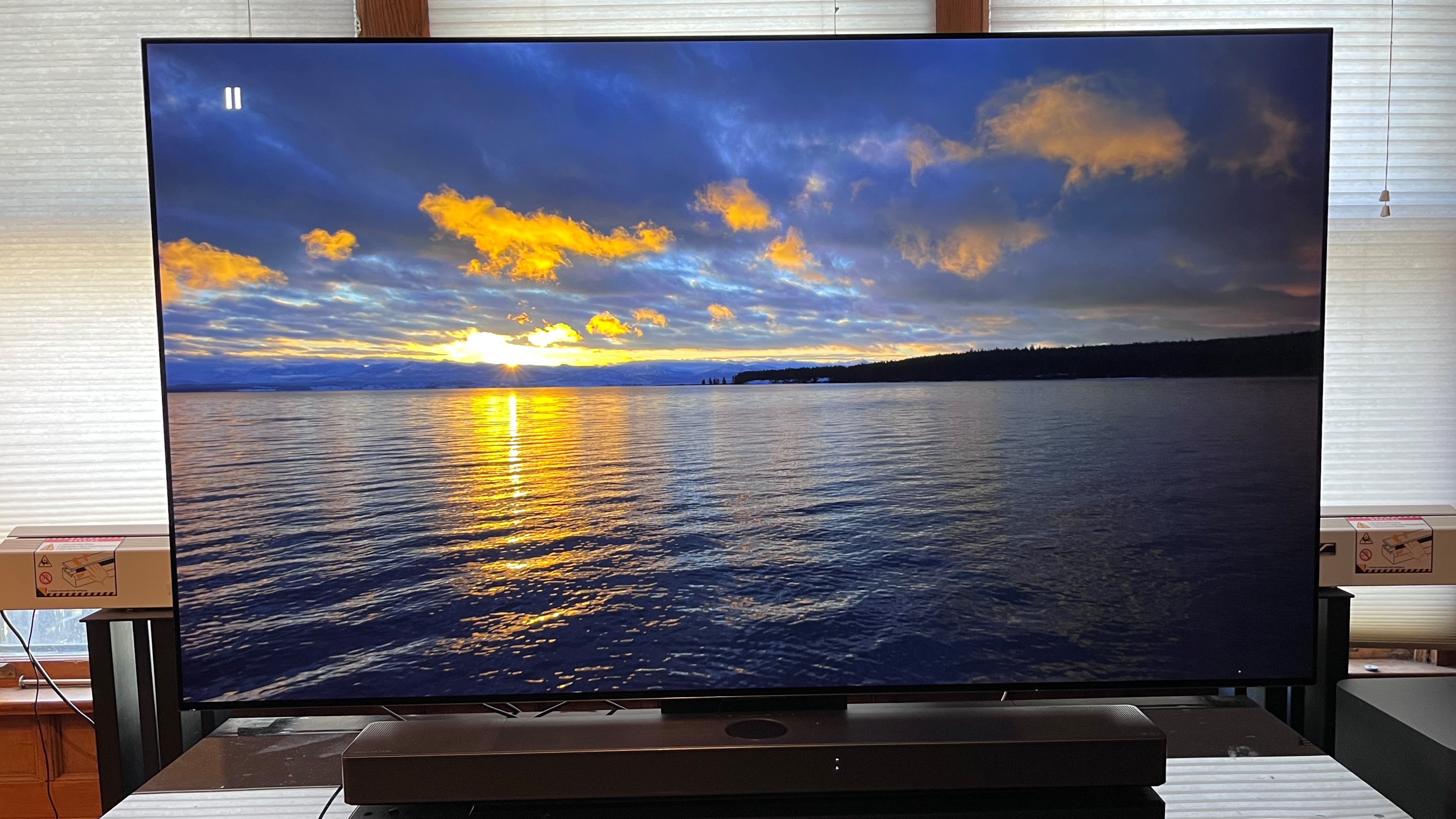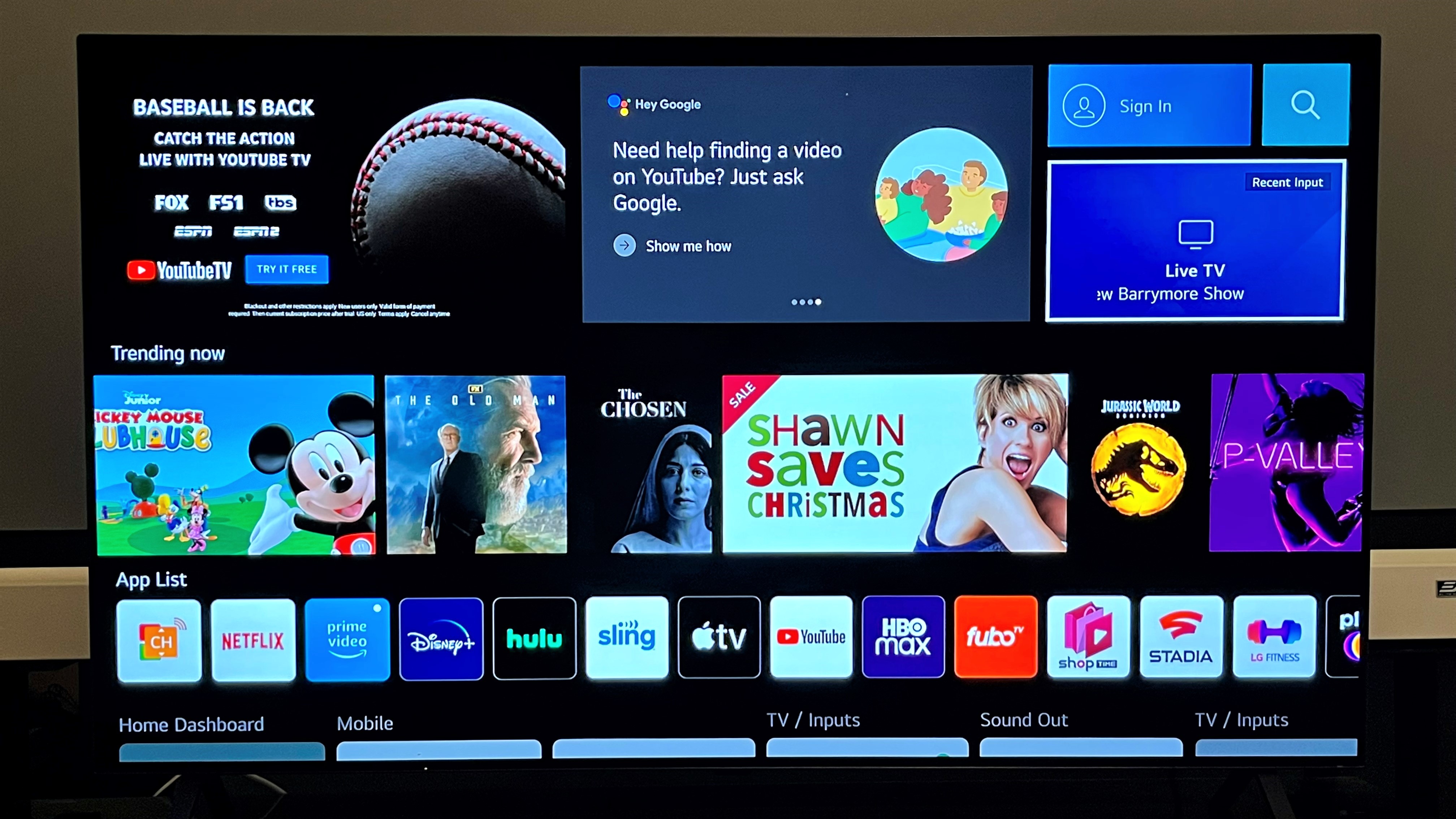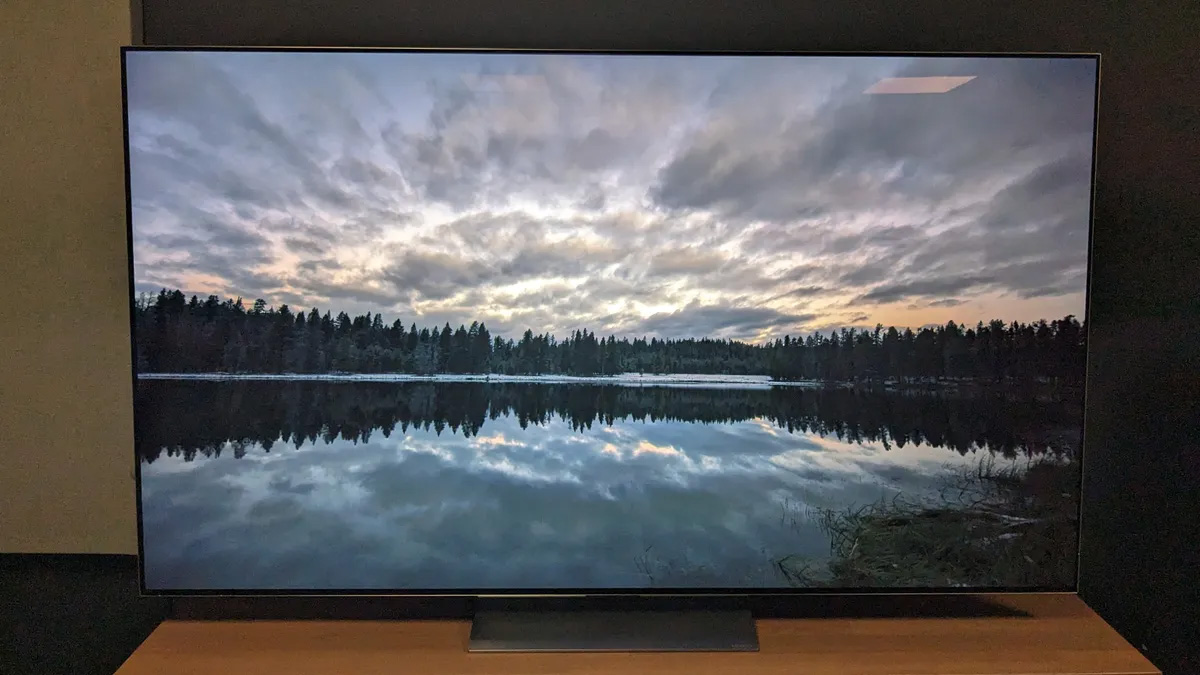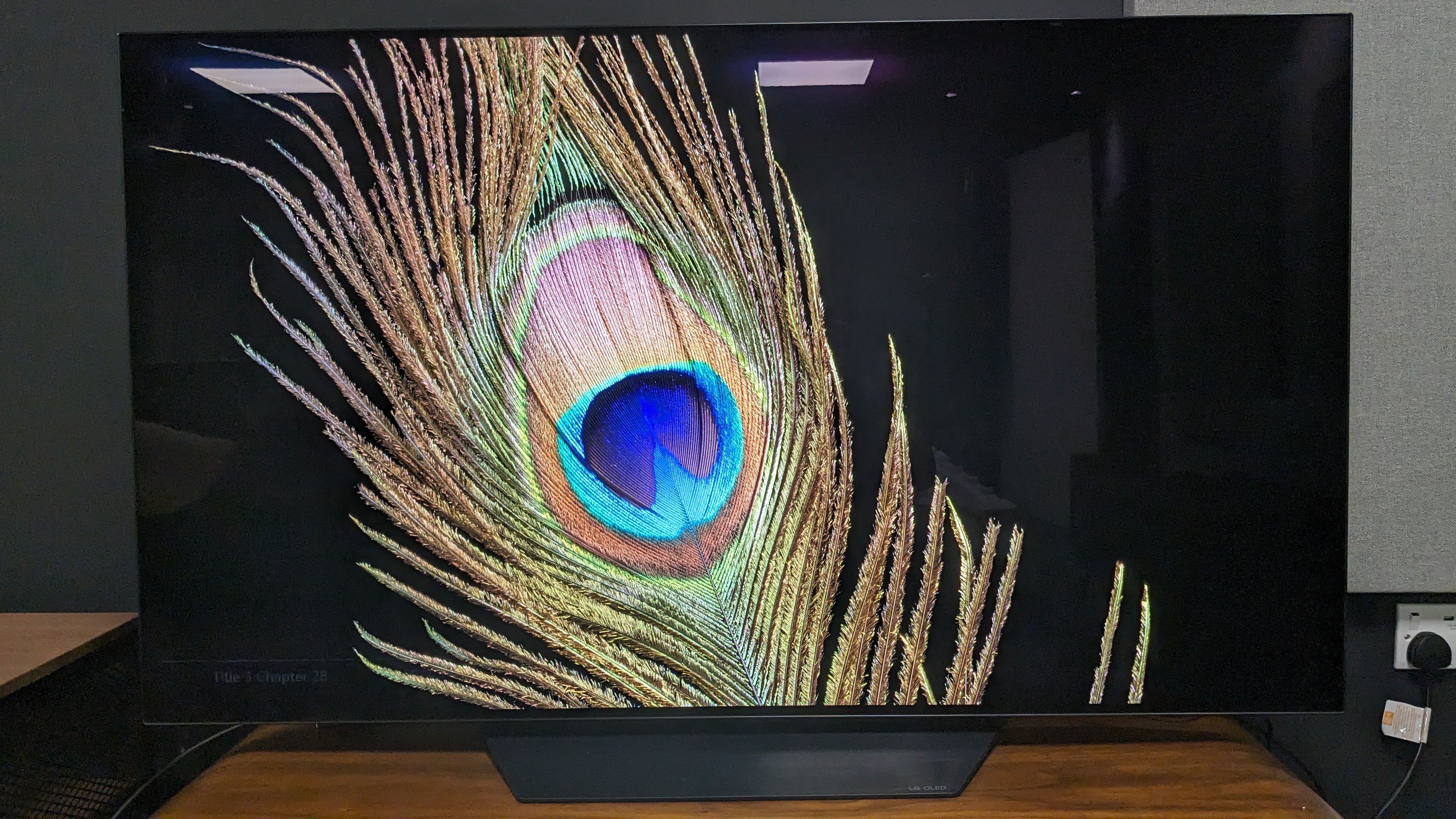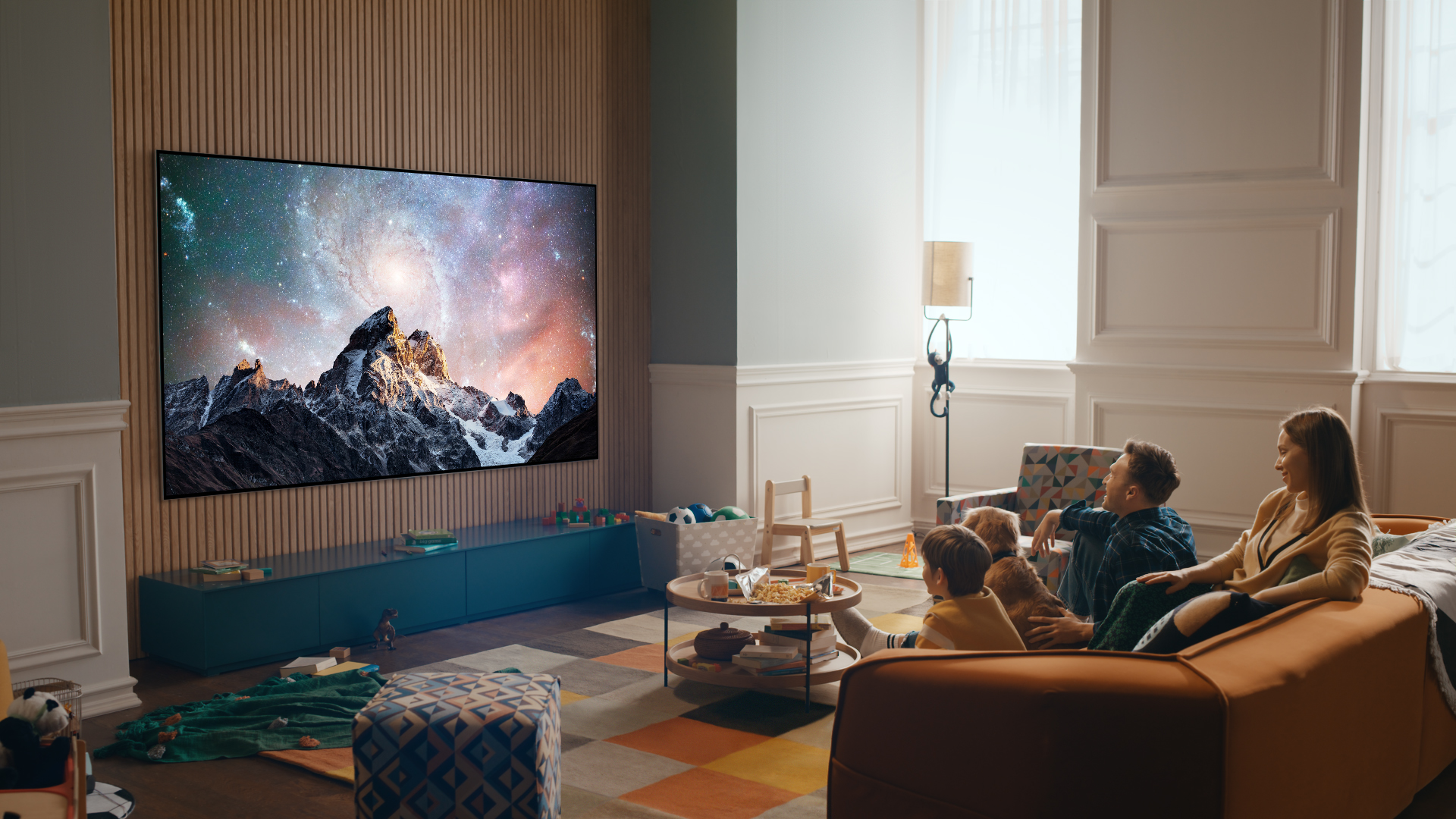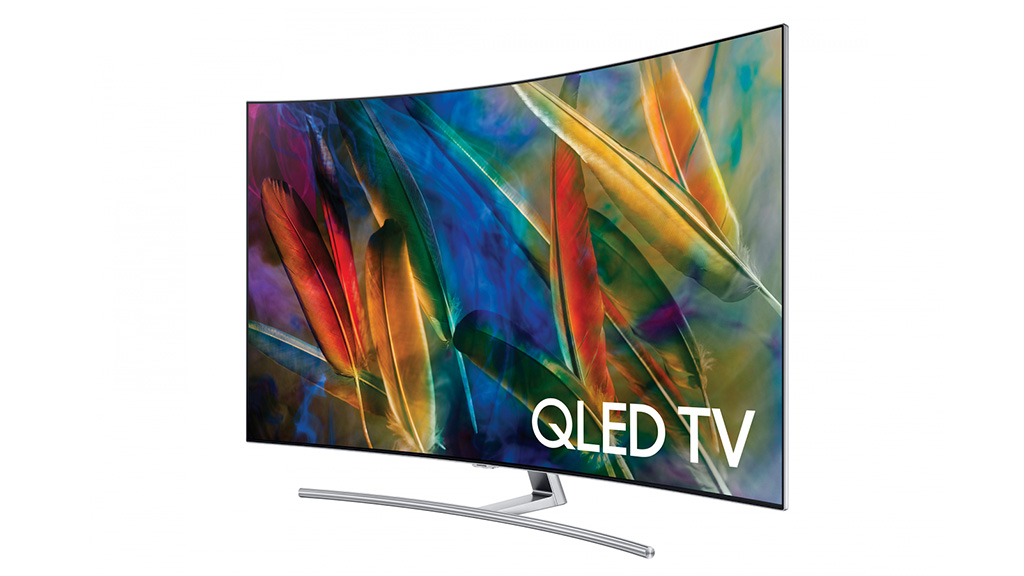Editor’s Note: March 2024
The LG C2 OLED is still our top pick if you’re looking for an LG TV that’s a solid all-rounder. The newer LG C3 OLED enters our list at fourth instead. It’s our recommended LG TV if you want great-looking movies and you’re a gamer.
For a more affordable choice, take a look at the LG A2. It can’t compete with the higher-end options but it’s a fine TV with a good picture, which makes it great value in our books.
Matthew Bolton, Managing Editor – Entertainment
LG is one of the top-performing TV brands in the world, so it should come as no surprise that the best LG TVs you’ll find on the market today are some of the most technically-advanced displays that have ever been made.
It’s not just one of the best TV makers, but it’s also one of the most prolific. LG tends to bring out many new TVs throughout any given year, from high-end displays that often feature in our best TVs guide to entry-level screens that are better suited to those on a budget. But with so much choice, it can be a challenge to choose the best LG TV for you.
We’ve reviewed many LG TVs over the years, as well as many from other top brands so we know how the competition stacks up. We’re always looking out for the best combination of design, performance and value for money.
LG TVs suit all kinds of preferences, including the best 8K TVs that look truly incredible; gorgeous QNED (LG’s term for QLED, or sets that use quantum dots) TVs that deliver much higher brightness than even the best OLED TVs; and also cheap but cheerful 4K UHD TVs that would make a great second screen in a guest room.
Whether you’re looking for a TV that’s premium and packed with the latest features or want to get the best LG OLED TV for the least amount of money, we’ve got a number of options for you to consider in our guide to the best LG TVs below.
The best LG TV for most people
The LG C3 replaces the LG C2 in our list of the best LG TVs. This is a newer, better TV with notable upgrades – it’ll just cost you a little more – which is why it’s our top pick for most poeple.
During our testing we wrote that this is a solid all-rounder TV – and a contender for the top TV of 2023 – because it ticks so many boxes. The LG C3 has got LG’s Alpha9 Gen6 chip, used for picture processing and HDR-improving features, like Expression Enhancer and OLED Dynamic Tone Mapping Pro. It’s tech like this that makes images look clearer, better and brighter.
It delivers a fantastic picture thanks to impressive levels of brightness, contrast and definition. That’s why we think it’s a great LG TV for movie lovers, but gamers will love the four HDMI 2.1 inputs with support for 4K 120Hz, VRR, ALLM, along with FreeSync Premium Pro and Nvidia G-Sync.
Design-wise, it’s slim, with a fibre construction that makes it more lightweight than its predecessor. The panel is thin and it comes with an aluminum center-mounted stand, which has a good look and provides solid support for the TV
The LG C3 isn’t a cheap TV. But anyone looking for a TV with fantastic picture quality and a full range of features will find the C3 to be a good value, and if the price trajectory of last year’s C2 is any indication, it will cost even less as we approach the holiday season.
Read our full LG C3 review
The best budget LG TV
This is LG’s most affordable OLED, and while that inevitably means it lacks some of the features of its more expensive stablemates, LG hasn’t cut corners when it comes to picture quality. The OLED panel here is very impressive with bright whites, deep blacks and excellent contrast. As you’d expect, the HDR support, like other LGs, includes Dolby Vision.
In our tests we found that the A2 lived up to LG’s claim of “near-infinite” contrast, delivering deep blacks, along with eye-catching highlights. We measured 524 nits maximum light output in the Standard (HDR) picture mode, 542 nits in Vivid, and 526 nits in Filmmaker mode.
Unfortunately, the speakers are weedier than in the more expensive models, and while we could hear dialogue okay we found ourselves wanting more oomph for action scenes in movies and TV shows.
For gamers, the A2 lacks the HDMI 2.1 ports you’ll find in the higher-spec models: it does have auto low latency mode (AllM) but the display is 60Hz, not 120Hz, and there aren’t the HDMI 2.1 gaming features such as variable refresh rates. However those features are really for the most intense gamers; if you’re the kind of player who isn’t playing competitive e-sports then it’s perfectly fine for the likes of Fortnite.
The A2 may lack the highest specs of others from the brand, but when it comes to picture quality it’s a very fine TV. If you want to spend as little as possible to get really great visuals this is an excellent option. Just be warned that as this is a 2022 TV you might not find it everywhere and unfortunately there’s no A3 model in the US and UK this year to give us an updated cheap alternative.
Read our full LG A2 review
The best LG TV for picture quality
The LG G3 is our recommended LG TV if you want a stunning picture above all else. There are a range of features on offer here. However, despite supporting all other HDR formats, the LG G3 does not include HDR10+ functionality. Gamers will be happy to hear there’s Dolby Vision gaming and 4K 120Hz with VRR and ALLM support across all four HDMI ports.
Pairing an OLED Evo panel with MLA technology yields a picture with vibrant colors, punchy and dynamic HDR images, stunning black levels, and a new-found brightness to top it all off. According to LG, it’s a 70% brightness increase on previous generations of its OLED TVs.
The LG G3 has a slim and elegant design, which makes it look effortlessly sleek on the wall. In terms of the frame itself, its silver and metallic design make it not only look good, but also feel solid. The only drawback is it’s designed with wall mounting in mind, meaning there are no optional feet or a stand included with the G3. You’ll have to pay extra for that.
The LG G3 is priced like a premium flagship TV. Though its price has dropped somewhat since its launch in March 2023, you’ll still find alternatives from other brands for considerably less – in our review we offered up the Samsung S95C as a solid rival. Having said that, the picture quality, gaming features and increased brightness compared to normal OLED panels mean you’re getting a lot of TV, even if the price tag is high. In other words, if you can afford it, it’s worth it.
Read our full LG G3 review
The best cheap OLED LG TV
The LG B3 is the TV maker’s entry-level OLED in its 2023 TV lineup (the A3 isn’t widely available) and although it only has a standard W-OLED panel (unlike the OLED Evo panels in the LG C3 and LG G3) it still offers a crisp, detailed picture with rich contrast and punchy colors. It’s also stacked with features for gaming and has an intuitive smart TV platform.
The LG B3’s crowning glory is its picture quality. It has a fantastic mix of dynamic color, deep black levels and refined details that gives the picture a natural, true-to-life feel. The LG B3’s picture feels more premium than its price suggests. It isn’t the brightest OLED around, due to its W-OLED panel, but that doesn’t stop it from offering phenomenal picture quality.
Gaming is another highlight for the B3. The set has a 4K 120Hz refresh rate as well as support for AMD Freesync, Nvidia G-Sync, ALLM, VRR and Dolby Vision gaming, which makes it ideal for PS5 and Xbox Series X owners. Gaming feels responsive, with the B3 handling graphically intense moments well thanks to its low 9.2ms input lag time (achieved by turning ‘Boost’ on in the Game Optimizer menu). Sadly though, it does only have two HDMI 2.1 ports.
It’s not all perfect, admittedly, as the LG B3’s built-in sound is average, which means it could definitely benefit from a soundbar to match the quality of the picture on screen. The stand that it comes with also feels a little cheap. However, it’s undeniable that if you’re looking for an LG OLED TV that won’t break the bank, this is the one to go for.
Read our full LG B3 review
The best LG TV for 8K
The LG Z3 is our top pick if you’re looking for the best 8K TV available from LG. We haven’t had chance to test this TV out for ourselves yet and our LG Z3 review is incoming. But the standout features here include an impressive 8K resolution that’s available on large 77 and 88-inch panels, which makes sense considering that’ll show off the 8K images the best.
We’re also looking forward to testing out the image performance considering LG’s α9 AI Processor 8K Gen6 is here, which is what’s driving a range of additional features, like a brightness boosting algorithm. There’s also LG’s AI Sound Pro on board, which the company promises can virtually mix the TV’s audio in order to create the effect of 9.1.2 surround speakers.
Our LG Z3 review is coming soon
The best 97-inch LG TV
After something a bit more stylish? The LG G2 OLED is a knockout television that delivers a super-thin design that comes with a special flush wall mount, so it barely protrudes from the wall. This is one of the older LG TVs in our list, but we’re keeping it in as our top pick if you’re looking for a 97-inch panel as LG has kept this model around in the bigger size – you won’t find a 97-inch G3.
The real hero here is LG’s OLED Evo technology with Brightness Booster Max, which makes this LG’s brightest OLED yet – even more than the LG C2. Matched with excellent image processing, Dolby Vision HDR and – yes – four HDMI 2.1 ports, it’s very well futureproofed.
In our LG G2 review we wrote: “The best surprise of all is the way the G2 uses its extra brightness to make pretty much every frame of any source you care to mention look even more sublime than it has on any LG OLED before.”
The breathtakingly slim design makes it a real centerpiece television, with the contrast and color benefits of OLED pushed to new, lighting-enhanced heights. The a9 Gen 5 AI processor is even more capable of smartly upscaling and processing onscreen objects in the most suitable way.
Watch out though: the G2 is really designed to be wall-mounted, and it doesn’t come with a TV stand or feet out of the box. You can buy a floorstanding Gallery Stand alongside, or find a third-party solution for placing on a counter, though. This is a major consideration if you’re considering the huge 97-inch model.
Read our full LG G2 review
How to choose the best LG TV
How do you choose the best LG TV?
If you’re looking for the best LG TV, there are several key considerations you need to bear in mind.
The first is size. We know it’s tempting to always assume bigger is better when it comes to technology. However, the size of the screen you should buy needs to be dictated by the space you have, how far away you’ll be sitting from the screen and the kinds of content you’ll be watching on it.
We’d also recommend checking out the HDR capabilities of any new TV –we’ve detailed these under each of the LG TVs in our guide.
It’s also worth considering sound. If you’re willing to spend extra cash on a soundbar, you don’t need to agonise about audio. However, if you’d like an all-in-one cinema system, consider a TV that delivers great audio as well as a fantastic picture. For example, the LG C2 in our guide above also makes it into our list of the best TVs for sound.
Finally, have a price range in mind. You might be able to bump up your budget a little if you find the perfect TV – or find a great deal in the Black Friday sales – but it’s a good idea to set a limit to begin with so you don’t fall in love with the unrivalled images and features of a TV that’s well above what you can afford.
You may also want to question whether it’s definitely an LG TV you want. There’s a lot to love about this brand, but it may also be worth your time to take a look at our best Samsung TV and best Sony TV guides as well.
Why should you buy an LG TV?
A great question. With so many outstanding TV brands out there, why should you choose LG over the rest?
Panel-maker LG Display (distinct from LG Electronics, which assembles and sells LG-branded TVs) has become the poster child for today’s OLED TVs, as a major supplier to its competitors like Panasonic, Sony, or Philips.
While you may like the specific feel or features of other OLED ranges – Panasonic has a more grounded color palette, while Sony’s Acoustic Surface Audio+ technology emits sound from the panel itself – you’re still in a sense buying from LG.
LG’s OLED sets tend to have a slightly warmer ‘pop’ to colors than some competitors, but the difference is pretty small unless you’re looking for it. OLED is able to reach deeper black levels and offer more precise light control than even the best LCD or QLED TVs, thanks to its self-emitting panels and ability to turn pixels off entirely. The TVs degrade faster than LCDs, though, and can’t go quite as bright as some of the newer Samsung TV models. (You can suss out your preference in our OLED vs QLED comparison guide.)
The webOS smart TV platform on LG TVs is also fantastic, with a sleek and polished interface alongside good app support – and voice commands through the Magic Remote for all new OLED sets. Keep in mind, though, that LG doesn’t support HDR10+, even if it has generally wide support for HDR10, Dolby Vision, and HLG formats. UK viewers won’t find Freeview Play on its most recent televisions either.
A feature that will be of interest to US viewers is an ATSC 3.0 tuner, which lets the set receive free, over-the-air TV channels broadcast using the next-gen ATSC 3.0 standard. ATSC 3.0 offers support for 4K resolution video with HDR and Dolby Atmos audio among other features, so it’s worth investigating when buying a new TV. At present, only LG’s G2-series models provide an ATSC 3.0 tuner, though we expect to see it offered in other lines in the future.
Which LG TV is right for you?
Can’t make head or tail of all those numbers and letters naming those LG TVs? We don’t blame you – the name structure can be confusing, if necessary for differentiating the huge number of old, new, and incoming sets that LG releases to market. It doesn’t help, either, that each TV maker tends to use different identifiers for their sets.
For LG’s OLED TVs, the structure is slightly easier. Something like the LG C9 OLED will be listed as “LG OLED55C9PUA” – with “LG” obviously referring to the manufacturer, “OLED” referring to the panel technology, and “55” being the model size you’re looking at (55-inch). Most sets will come in several sizes, though 55-inch is the flagship size for most new televisions these days.
Here, “C” is for the mid-range “C Series” of televisions, which sees a new model every year, alongside the budget “B Series”, stylish, wallpaper-thin panel “G Series”, and more advanced “Z Series”.
The “9” in “LG OLED55C9” refers to the year the TV was released: 2019. That’s why LG TVs that came out in 2018 were called “C8”, “E8”, and so on. At the end of the model number are three letters marking the territory the TV is sold in: “PUA” is for North America, while “PLA” is for the UK.
LG TV Guide Cheat Sheet
Here’s a quick cheat sheet for reading an LG label:
Example: LG 65SM9500PUA
1. 65: Screen size (this is a 65-inch TV)
2. SM: Indicates panel technology (S for Super UHD) and year it was made (M for 2019)
3. 9500: The number here is the series (higher is better but also more expensive typically)
4. PUA: Territory that the TV is offered in (PUA for America, PLA for UK, PTA for Australia)
LED sets work a bit differently, though. LG’s LEDs are now labelled under “NanoCell”, rather than “Super UHD”, though they’re still the LED panels LG has been making for years.
The LG NanoCell 9 Series – that “9” again referring to its 2019 release, so you know it’s up to date – is listed as “LG 65SM9500PUA”, this time leading with the model size (65-inch). That’s followed by the “S” labelling for Super UHD / NanoCell TVs, compared to “U” for simpler UHD TVs, “L” for LED TVs that aren’t 4K. LG also used to use “E” for OLED and “P” or Plasma TVs (now discontinued), though you won’t find these labels on new sets.
The second letter differentiates between each year’s new product range. So, while 2019 4K LEDs from LG all have “SM” in them, 2018’s sets had “SK” instead.
How we test the best LG TVs
The way a TV brand says a TV works and the way it does day to day doesn’t always add up. That’s why we’re dedicated to testing every TV that we recommend, but there’s a lot to consider.
We put all of the best LG TVs in this guide through their paces with a range of content resolutions – including standard definition, 1080p, 4K and sometimes 8K.
We rate the picture quality, the brightness and vibrancy of colors. We test the features and smart assistants built-in, as well as how the most popular streaming apps, like Netflix, work. We listen to whether the built-in speakers work well out-of-the-box so we can tell you whether it’s a good TV for sound or one you’ll absolutely need a soundbar for.
We also spend time tweaking the settings of a TV so we can say with confidence whether it has everything you need. We’ve recently upgraded our testing program to include measurements of peak HDR brightness, DCI-P3 color space coverage, Cinema mode (or Filmmaker mode, if available) color accuracy, and 4K input lag, so our reviews of LG and other TVs will include this data in the performance comments as well.
Importantly, we also live with the TV. By that we mean we don’t just watch a few TV shows and call it a day. We test the viewing angles and brightness levels in different rooms at different times of the day. We’ll listen to the state-of-the-art sound when we have family chatter to contend with and we’ll share our first-hand experiences.
We’ve tested hundreds of TVs over the years, so we know what we’re looking for and what makes a solid performance and a stellar performance.
We also think it’s important to provide wider context, even in a guide like this one that’s focused on one specific brand. That’s why, where possible, we’ve included details about models with similar specs from other TV makers. That way you’ll be able to make the best decision about which TV is right for you.
Check out the latest LG promo codes to see this month’s best discounts.


